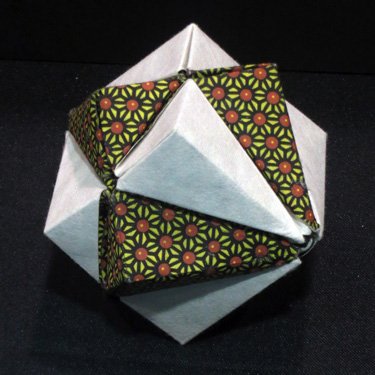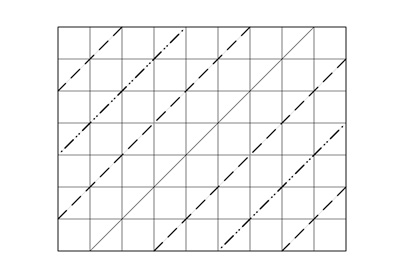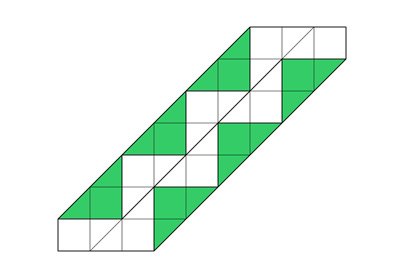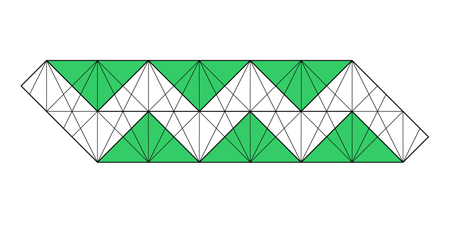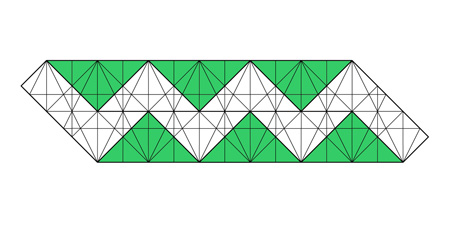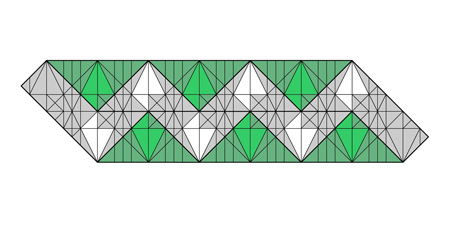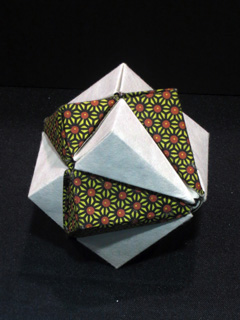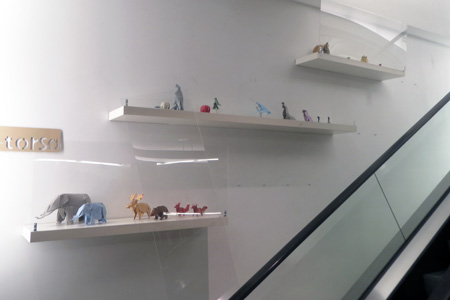Just got back from another OUSA convention. This one was extra special because my book, Origami Animal Sculpture, made it’s debut for advanced sale at the Source and at Kinokuniya. It looks like the book is a hit among the OUSA crowd, and maybe even in the wider world. Friday I folded most of the day, and got my exhibit together. I finished my American Turkey with color change, folded from a sheet of Wyndstone laminated on side with red tissue. I started this model around the time I was doing the photography for my book but didn’t finish it in time, so it’s been sitting in a box. All that was really left to do was the final sculpting, which went just fine once I started it. I also finished the design for my Butterfly Mark II and folded a small flock of them.
Once I got to the convention and set up my exhibit I went straight to the Source to get a copy of my book. I’m pretty sure the advanced copies sold out over the weekend, based on the number of people who came up to me to ask me sign theirs. I think people really respond to the wildlife theme, and to the fact that the models have a lot of character and detail but are not too complex to fold. It was really fun and nice, all the support and positive vibe from my origami colleagues.
Saturday I did the book signing event at Kinokuniya. I actually got a pretty good sized crowd and informally taught models out of the book the whole time, held and audience, and even signed and sold a few books. These are intermediate level models for a general audience, so I’m glad they went over. Bob my photographer was there, and so was Jon my publisher and they met for the first time, and afterwards we went to lunch. It was a very interesting discussion covering various aspects of publishing and printing and the book biz. Jon stressed the importance for getting some social media buzz going to try and ignite online sales. We also talked about potential themes for a second book, and he mentioned the idea of simple models to appeal to a wide audience outside the origami community.
My Saturday class was my Foxy Fox, and it was very full. I’m told it was the first class to sell out Saturday. I sometimes teach from diagrams, but this time I just demo-folded and used the class as an opportunity to hawk my book. Everyone finished and thought it was a wonderful model. I skipped a few of the fussy details, but this got me thinking more about how to simplify my models.
Saturday night I got into a long conversation with the master John Montroll on the subject of folding simpler models. My premise is that it’d be worth exploring but the models would still have to be interesting and have something to say, not just the some old traditional and/or crappy folds you’d find in say a desk calendar. And that would actually be a really good challenge. Always one step ahead, John said he’d working on a book of simple models and pulled out a stack of diagrams. The average model was maybe 8 or 10 steps and the longest was maybe 16. Very nice models too, the Bald Eagle in particular. Wow!
Sunday I taught my Adirondack Moose, again by live demo to promote the book. Again the class was pretty full, and this time it had critical mass of short-attention-span kids, who I had to tell several times to quit interrupting and just wait for the next step. This model was closer to complex than intermediate, but again they all finished and a few stayed after to work on the finer points of the sculpting.
Monday I went downtown and saw Uyen’s Surface to Structure exhibit at Cooper Union. I was really blown away at the whole thing. First of all, the space and presentation were just fantastic. It was a well lit gallery space, very open, very white, and the models were all displayed on simple stands, very minimalist. And second, the collection of models was the finest you’ll see anywhere, and quite a broad range at that. I feel honored to be included in an exhibition with classic Yoshizawa and all that other stuff. My stuff was well presented along with everything else, but when I got there I thought one of the models was a little off, so I waited until the guard started playing with his phone and the nudged it a little to one side. Far and away the best origami exhibition I’ve seen, and think Uyen definitely did the world a service by really raising origami to the level of fine art in the public eye. She also gave me a copy of the program, which was very nice too. Just as beautiful as the exhibition.
Monday afternoon I had some free time and started coming up with some simple models. It seems like a good direction to explore right now. At the very least I can come up with lots of models quickly, which is refreshing after spending weeks or even months on a single idea with the single-sheet polyhedra and tessellations. I did a version of my Butterfly II without legs that was about ten steps. Then I did a variation and it became a hawk. Now the trouble became every time I finish a design, I think maybe I’ve seen it somewhere before. So I took advantage of the opportunity to ask around. These two at least seemed to be truly new and original.
All in all another great convention. I always come away with my creative energy charged up with a bunch of new ideas. It’ll be interesting to see what develops in the coming year.
